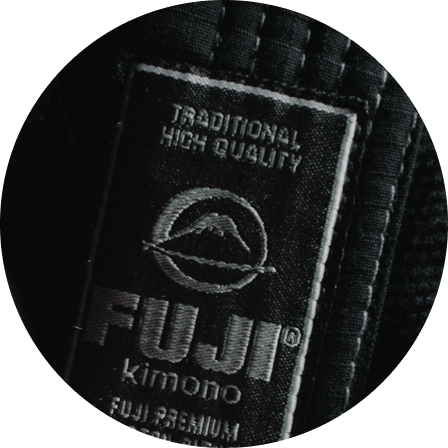Now that strength training has become a commonplace for grapplers, a question keeps popping up, “how do I build strength without putting on weight?” First, let me say that strength doesn’t directly pertain to muscle size or girth, it truly is a measurement of the ability to produce or resist force, which is something all grapplers like the sound of. Second, it’s pretty difficult for grapplers to gain muscle mass, due to the amount of volume and nature of their training. To fully explain, I like to attack this question from a few different perspectives. First, from a metabolic demand perspective. Second, from a neuromuscular perspective. And third, a method implementation perspective. Let’s get started!
When I say metabolic demand, I mean what energy systems are predominant in the sport? There are three main energy systems human beings use. The first two are considered anaerobic (not fueled by oxygen) and the last is considered aerobic (fueled by oxygen). Here are all three with their respective durations of time.
Phosphagen/ATP-PC (10 seconds or less)
Glycolytic (30 seconds – 2 Minutes)
Oxidative (Anything longer)
Energy system usage in sport is entirely contingent on the intensity and duration of the activity taking place. So for grapplers, more than likely you’ll be using all three systems at one time or another while you train for the sport to maximize your abilities when you compete. But when it comes to competitions, you’re going to be overwhelmingly tapping into those first two systems especially on the mats, and the third primarily for recovery between matches (you certainly need that high aerobic capacity in order to come out fight after fight).
So why bring this up? How does it relate to strength training for grapplers? While both Ashoka and Sam Dadd have touched on the importance of conditioning for the combat athlete (ie training the oxidative system), I’ll be talking mostly about training the phosphagen system.
How long does it take to throw your opponent? Less than 10 seconds for sure. So you need to be strong enough AND fast enough in order to accomplish this feat and walk off the mats victorious. How effectively you use your phosphagen system is a direct measure of how powerful you are, and it can really only effectively be used if it is effectively trained. While strength is a measurement of producing or resisting force, power is learning to apply force quickly (in fact the equation is literally [force x velocity]). Does that sound familiar and appealing to your combat athletes?
To train power and strength appropriately and translate it to the mats is to give yourself abundant opportunities to be successful."
When folks traditionally think of building strength, they think muscle mass and girth and size. Truthfully, strength comes in all shapes and sizes, which is great news for the grappler because you can be both strong and lean at once!
Let me explain from a neuromuscular perspective: Your body increases strength in two ways. The first is by recruiting MORE muscle fibers in any given muscle group, and the second is increasing the firing capacity of your motor units (motor neurons and the skeletal muscle fibers they innervate). Essentially, muscle does what it’s told by your brain through neural pathways, if you can train those neural pathways to be more efficient, to recruit more muscle fibers and do so quickly, you have untapped the capacity of your muscles to apply force and to do it fast. What that means for you is you can be faster and stronger on the mats than anyone else! This means, though, that you have to be actively and regularly strength training in order to achieve this neuromuscular adaptation (lifting weights = good!)
Now let’s talk implementation. All the above is super fun for someone like me who likes thinking about the nuts and bolts of why we do what we do. But I understand that might not be what you came here for, so let’s talk training!
To develop strength for the grappler that won’t add mass we’re looking to develop explosive power and strength without girth. Great! What’s that mean? Here are some tips:
-
Hit some plyos. Plyometric drills are superb for the grappler to incorporate into their workout regiment, I like to throw these in at the beginning of a workout, but if you’re advanced enough to incorporate some contrast training (often called Post-Activation Potentiation=PAP, basically meaning lift something heavy and then do something fast) plyos can play an awesome roll throughout the workout as well.
-
LIFT EXPLOSIVELY. Hit loads around 70-85% of your 1RM and lift that load FAST. This usually means Olympic lifts (cleans, snatches, jerks), even medicine ball work, or KB Swings (these are great for combined cardio work as well, take a look at Ashoka’s post for more information)
-
LIFT HEAVY! Training at 90% or above your 1RM means you’re recruiting a lot of those muscle fibers we talked about earlier and improving the efficiency of your nervous system to apply force when called upon to do so. Keeping reps low and focusing on moving the bar quickly will ensure you’re still recruiting the right fibers.
-
Lose the volume. Strength training for hypertrophy means high volume and literally means the enlargement of an organ or tissue from the increase in the size of its cells. Don’t want to get big? Great! Keep the reps low and the sets lower. We’re talking 2-3 sets x 3-5 reps and that’s pretty much it.
The right work done in a weight room can drastically improve your game on the mats, but only when utilized and implemented properly. And strength training is only half the battle, make sure you’re getting proper nutrition in and recovering well in order to truly maximize your ability on the mats. The guys at FUJI Fit have an entire arsenal of information about strength training and conditioning for grapplers, use them as a resource and get better every day. And if you have any questions for me, feel free to leave them in the comments below!






